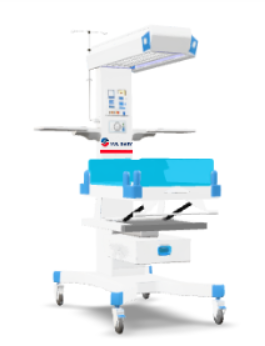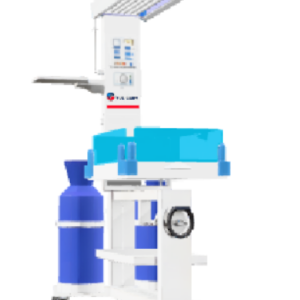Description
The YG1820 Infant Radiant Warmer is expertly designed to deliver precise temperature control for newborn infants, featuring a dual-control microcomputer system that operates in both skin temperature and manual modes. This state-of-the-art unit offers adjustable radiant heating with a range of 25-38°C and a remarkable sensor accuracy of ±0.3°C, ensuring that vulnerable infants remain in a stable thermal environment. The modular design of the YG1820 includes an APGAR timer, X-ray cassette compatibility, and optional LED phototherapy, making it an all-encompassing solution for neonatal care.
Market Price
The YG1820 Infant Radiant Warmer is competitively priced within the mid-range of neonatal equipment, offering exceptional value for its advanced features and hospital-grade performance. In the market, the price range for similar equipment generally falls between $4600 and $5400, depending on the included accessories and additional features. This aligns it as an affordable choice for hospital settings, delivery rooms, NICUs, and pediatric clinics, making it accessible to facilities aiming to enhance neonatal care.
Frequently Asked Questions
- How does the skin temperature sensor work? The medical-grade probe continuously monitors infant skin temperature with ±0.3°C accuracy, automatically adjusting the heat output as needed to maintain the set parameters.
- Can this unit be used for phototherapy? Yes, the unit offers an optional LED phototherapy module that is sold separately, providing effective treatment for jaundice with 425-475nm blue light.
- What safety features does it have to prevent overheating? The YG1820 is equipped with dual audible and visual alarms that activate at 38°C in normal mode and at 39°C in high mode, alongside automatic power cutoff protection to ensure safety.
Advantages and Disadvantages
Advantages
- Precision Thermal Control: Boasts ±0.3°C accuracy, meeting stringent NICU standards.
- Clinical Flexibility: Optional modules are available to extend functionality, including phototherapy and oxygen modules.
- Ergonomic Design: The tilting canopy improves clinician access and usability.
Disadvantages
- Power Requirements: Requires a dedicated 220V circuit for optimal performance.
- Footprint: Requires a clearance of 1.5m² for full canopy movement.
- Accessory Costs: The phototherapy and oxygen modules are sold separately, adding to the overall cost.
Product Use in the Field
The YG1820 Infant Radiant Warmer is widely used across various settings, including delivery rooms for newborn stabilization, neonatal ICUs for thermoregulation therapy, pediatric ERs for hypothermia treatment, and maternity clinics for routine newborn care. Its rapid heating capability is particularly advantageous in emergency C-sections and preterm deliveries, where immediate thermal support is vital.
Recommendations
To ensure optimal performance and longevity of the YG1820 Infant Radiant Warmer, it’s recommended to calibrate the temperature sensors every six months, disinfect surfaces between patients with hospital-grade solutions, test alarm systems before each shift, use OEM probes for accurate temperature readings, and store the canopy in an upright position when not in use.
Features
- Precise dual-control microcomputer system for temperature regulation
- Adjustable radiant heating from 25-38°C with ±0.3°C accuracy
- Modular design with APGAR timer and X-ray cassette compatibility
- Optional LED phototherapy for jaundice treatment
- Four self-check alarm systems for enhanced safety
- Rapid heating capability in 30 minutes
- Ergonomic and adjustable tilting canopy and mattress
- RS-232 data connectivity for integration with patient monitoring systems
- Efficient power consumption suited for all clinical environments
Technical Specifications
| Model | YG1820 |
| Electrical requirement | ~ 220V 50Hz or ~ 230V 60Hz |
| Power consumption | ≤700VA |
| Air mode temperature range | 25.0°C-37.0°C |
| Over temperature alarm | <38.0°C |
| High mode temperature range | 37.1°C ~ 38.0°C |
| High mode temperature alarm | < 39.0°C |
| Temperature deviation alarm | ±1.0°C |
| Skin sensor accuracy | ≤±0.3°C |
| Mattress temperature Uniformity | ≤2.0°C |
| Heating rate | ≤30min |
| APGAR timing | 1min. 5min. 10min |





